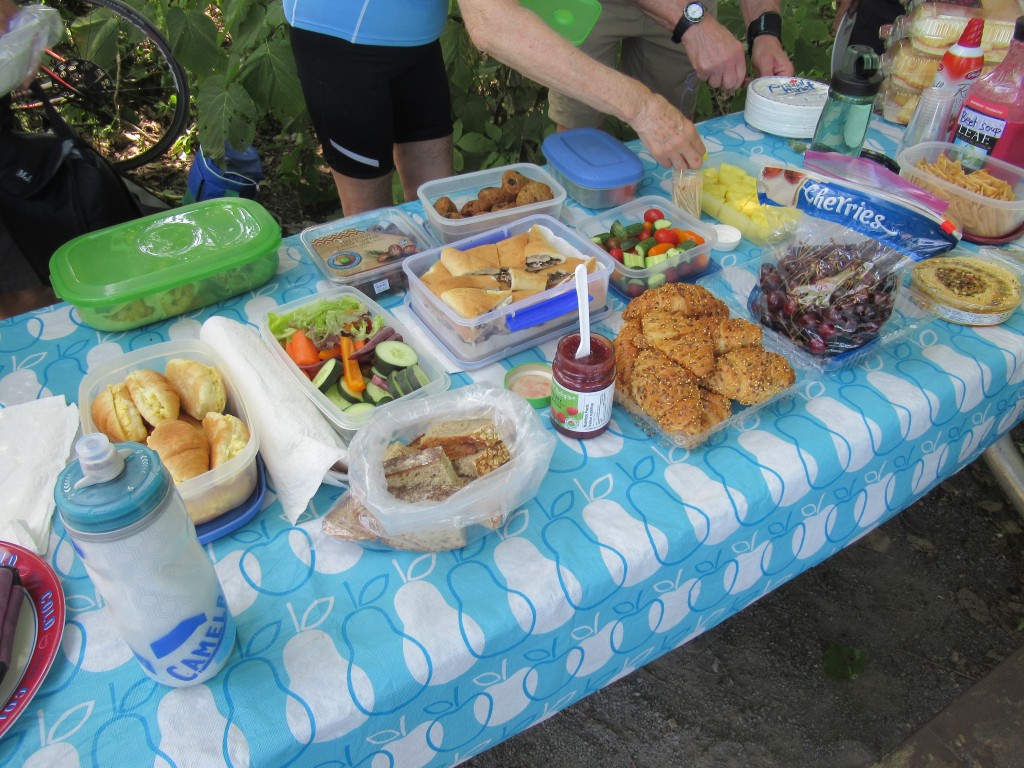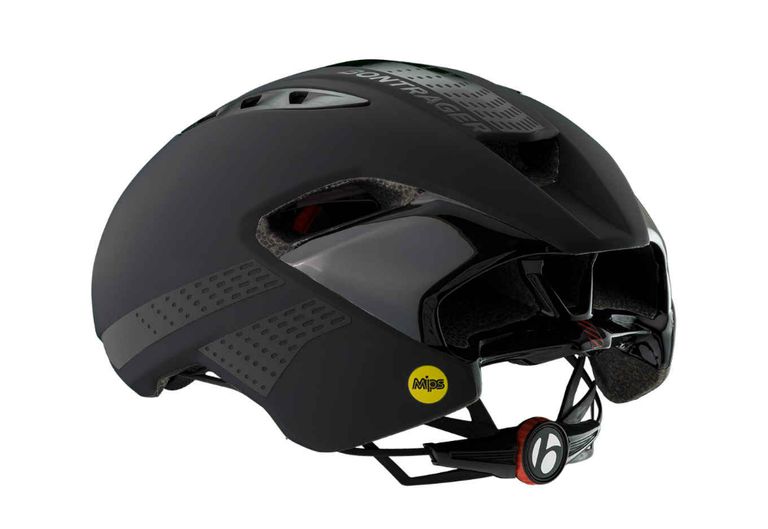The Cross Canada Cycle Tour Society August 2018, Volume 35, Issue #8
CENTURY RIDE NOTICE, 2018
Led this year once again by Monica Zack and Chris Hodgson, the Fraser Valley Century Ride is scheduled for a 7 am start on Sunday, August 19 departing from Blair Rec Centre in Murrayville, located just south of Fraser Highway and east of Langley Centre. There’s loads of free parking.
The ride is the same as that brilliantly conceived nine years ago by Claire Muters: three loops totalling 100 miles (162.5 kms) starting and ending at Blair Pool and with 15-30 minute breaks between loops.
Loop 1 (53.5 kms) departing 7 am, takes us down to Fort Langley and on to the end of River Road and back.
Loop 2 (72 kms) departing 10 am, takes us south to Zero Avenue and back north to Fort Langley where we lunch at our favorite deli / grocery store.
Loop 3 (37 kms), departing around 2:30-3:00, is entirely on the flats out to Aldergrove and back.
You can choose one, two or all three loops as you prefer. Just remember to carry lots of water. Route maps will be sent to anyone expressing interest by e-mail.
It’s exhausting but fun, and bestows guaranteed bragging rights on all finishers.
Hope to see you there!
Upcoming Tours
Upcoming Hub and Spoke
2018 Manitoulin Island Hub & Spoke
Welcome New Members
| David | Lehane | White Rock | BC |
| Ming(Robert) | Kao | Victoria | BC |
| Linda | Rossignol | Vancouver | BC |
| Heather | Gray | Victoria | BC |
| Rita | Quill | Burnaby | BC |
The National Capital Chapter’s Annual Picnic
Our 4th annual Petrie Island Picnic Pedal was held recently at this local east-of-Ottawa beach. Three groups, totalling 21 members, left from three different locations in the city, with total distances of 42, 66 and 75 km, bringing with them the fixings for a wonderful potluck lunch. A table was set out with everything from crackers and cheese, assorted veggies, sandwiches, fruit and brownies with, perhaps one member bringing a canned “drink”. 

 Another member was celebrating the 70th anniversary of his arrival in Canada from the UK and provided us with “cream teas”! This initiated stories of other ex-pats and their entries to Canada.
Another member was celebrating the 70th anniversary of his arrival in Canada from the UK and provided us with “cream teas”! This initiated stories of other ex-pats and their entries to Canada.
After an extremely hot spell in the Nation’s Capital, which is continuing as I write, the temperature on picnic day was comfortable with only a slight breeze. However, nobody was tempted to go for a swim in the Ottawa River.
Barbara Wilson, CCCTS NCR Chapter Rep
How Safe Is Your Bike Helmet?
A NEW SYSTEM RATES HELMETS FOR SAFETY IN REAL-WORLD CRASH SCENARIOS BY SELENE YEAGER,JUN 25, 2018
Any bike helmet bought in the US is required to pass a series of safety tests. Problem is, those tests have limits that make them irrelevant to many real-life bike crashes.
For instance, to earn approval from the Consumer Product Safety Commission (CPSC), helmets must protect a dummy head when dropped straight down at a specific speed on a hard surface (usually an anvil). But unless you’re going full endo, you’re far more likely to hit your head at an angle during a bike crash. And the CPSC tests for impacts at a speed higher than most cyclists generally endure, despite the fact that concussions often occur at lower speeds.
A new ratings program, developed by Virginia Tech and the Insurance Institute for Highway Safety (IIHS), aims to give riders a more thorough understanding of how well helmets on the market will protect their noggins. And while the first series of ratings, released on Tuesday, doesn’t include any helmets that failed, some did offer more protection than others.
“The helmet ratings are important because right now, there’s no available information to consumers when purchasing helmets,” Steve Rowson, director of the Virginia Tech Helmet Lab, said in a press release. “There are differences in performance, and some helmets better reduce risk than others.”
In conjunction with researchers at the Helmet Lab, the IIHS put 30 popular adult-size helmets to a new battery of tests to better simulate real-world bike crashes.
First, the team used the standard CPSC rig to test a helmet in two places—on its side, which is covered by the CPSC testing, and at its front rim, which is not part of the required testing. They then used a different test rig, outfitted with a dummy head striking a slanted anvil covered with 80-grit sandpaper, to simulate an asphalt road that a crashing cyclist would likely hit at an angle.
To create the final ratings system, the team embedded sensors in the helmets and put each one through additional crash simulations involving different speeds and impact locations. The sensors measured acceleration and rotational velocity, which the researchers used to estimate concussion risk. Each helmet was then given a star rating, with 5 stars being the highest and zero stars the lowest, to represent how effectively the model reduces overall injury risk.
Of the 30 helmets tested, four earned 5 stars. All were road-style helmets equipped with Multi-Directional Impact Protection Systems (MIPS), which create a sliding protective layer inside the helmet. When your head hits the ground, the helmet sticks on the rough surface of the pavement but your head can still rotate, which reduces rotational forces that can jostle and injure the brain.
Bontrager Ballista MIPS
The $200 Bontrager Ballista MIPS earned a 5-star rating, in part because of technology that lets the head rotate while the helmet stays put during a crash.
Two helmets earned 2 stars, which is still considered adequate. The rest earned 3-4 stars, and no helmets received 1-star “marginal” ratings or zero-star “not recommended” ratings. Urban helmets didn’t perform as well as road helmets, likely because they tend to be stiffer and don’t absorb energy as well.
Cost wasn’t a predictor of performance. While a more pricey lid may be lighter, better ventilated, more stylish, or come equipped with a more comfortable strap system, it won’t necessarily keep you from getting concussed better than a helmet that costs significantly less. Both the $200 Bontrager Ballista MIPS and the $75 Specialized Chamonix MIPS earned 5-star ratings. (See the full list of rated helmets.)
“Our goal with these ratings is to give cyclists an evidence-based tool for making informed decisions about how to reduce their risk of injury,” Rowson said. “We also hope manufacturers will use the information to make improvements.”
The lab is continuing to test other styles, including mountain bike and BMX helmets, and plans to conduct a series of tests on youth helmets in the near future.
Over 3,500 bikes donated thanks to Massachusetts man
WCVB Boston – Friday, June 29, 2018
It all started with a piece of garbage.
The Patriot Ledger reported that Richard Bonanno was driving on the west side of Scituate four years ago when he saw an expensive mountain bike at the end of a driveway – thrown out with the trash. He stuck it in the back of his truck, took it home, fixed it up and gave it to a neighbor’s kid.
“The next day there were three more. So I picked them all up,” he said. “I gave all three to a friend in Hull, who said four kids came by wanting the bikes. He gave away three then called me and said ‘do you have any more?’ and I said ‘I’ll see what I can do.’ I started looking for them after that. That’s how it all started.”
Today, Bonanno has given away 3,500 bikes to those in need and ships them all over the country – mainly to McFarland, Calif., Sioux, S.D., Henderson, Tenn. and Macon, Ga. He has sheds in his Hollett Street backyard full of half-finished bikes, a garage full of tools and a workstation dedicated to refurbishing them before they get sent out.
“I’ll get bikes that are in brand-new condition, and all I have to do is put air in the tires, but I also get bikes that need mouth-to-mouth resuscitation, they’re basket cases,” Bonanno, a contractor, said.
Bonanno has always been a bike lover. He said he remembers growing up in Hull in the 1960 when everybody had a bike, and he is a 26-time rider in the Pan-Mass Challenge.
“It’s a different time and every, back then you would just hop on your bike and go anywhere you wanted with your friends,” he said. “To me, every kid should have a bike. It gives you freedom.”
He said that is especially true for the less fortunate people who end up with his bikes – specifically the homeless men and women in Georgia who are given bikes when they get new jobs, or the needy children on the Pine Ridge Native American Reservation in South Dakota.
″(The reservation) has a very large diabetes population, and now the kids are actually getting exercise,” Bonanno said. “So we’re helping them out health-wise, and now they can get on their bikes and escape a bad home life.”
The bike project has become a community-wide effort — almost all the bikes are found or donated by Scituate residents, and Bonanno makes sure to keep everyone who helps updated via Facebook. People bring Bonanno, 61, old bikes, gift cards for parts and even clothes and toys they want to donate, knowing he will get them to the right place.
With the help of Hingham resident Brian McGeoghegan, who provides shipping at no cost, bikes have ended up in the hands of migrant farm workers in California, earthquake victims in Haiti and family-crisis centers in Boston. All he asks for in return is a photo.
“I want to show the people of Scituate where their bikes are going,” he said. “So then I post them on my Facebook page and every time I do, the bikes just pour in. It’s a vicious circle.”
Two years ago, Bonanno got to see the photos come to life on a trip to California. The McFarland Police Department handles the donations in the farm-rich San Joaquin Valley, and hosted a community-wide bike give away and raffle in 2016, something Bonanno says he’ll never forget.
“Over 1,000 bikes have gone to McFarland. I sat in the corner of the playground the whole time and watched this,” Bonanno said. “What was really cool about it is that they had no idea who I was. I truly believe the best deeds are done when nobody is looking.”
Published at least ten times a year by The Cross Canada Cycle Tour Society, a non – profit organization for retired people and others who enjoy recreational cycling.
Items for the NEWSBRIEF must be received by the 28th of the month. The Editor reserves the right to edit for clarity, brevity and suitability of publication. The views expressed in the “NEWSBRIEF” are not necessarily those of the CCCTS or the Editor.
Submissions for NEWSBRIEF should be emailed to derailler@gmail.com
Please be sure to notify the office of any changes in your personal contact information; be it address, phone or e-mail.

